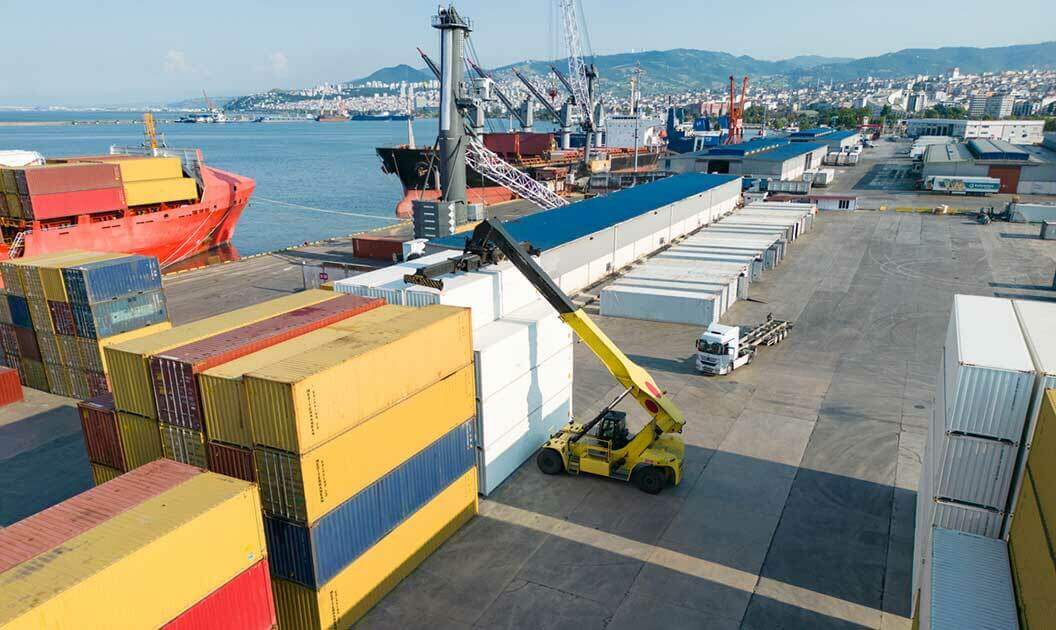
Importer of Record vs consignee - they may sound like industry jargon, but these two roles are important in international shipping. The importer of record and consignee play distinct roles that impact how easily your goods move across borders. Whether you're a seasoned importer or new to the business, understanding these roles can save you from headaches and prevent shipping delays.
U.S. Customs and Border Protection states the Importer of Record (IOR) is responsible for ensuring legal compliance and payment of duties on imported goods. The consignee, however, is simply the recipient of the shipment. While the IOR can also be the consignee, they often differ in business transactions.
In this article, we'll unravel these terms and describe their responsibilities. Read on to find out why understanding their differences is not just helpful, but essential for anyone involved in importing.

The IOR is typically the entity responsible for making sure imported goods comply with all the local legal requirements and regulations. This includes paying any necessary duties and taxes. Conversely, consignees actually receive the goods for use, storage, or resale.
To further understand what sets these roles apart, let’s take a more in-depth look at each of them.
The IOR is the official party on record with U.S. Customs and Border Protection (CBP) who is legally responsible for all entries of merchandise, the payment of duties, and adhering to all import regulations. This role isn't limited to companies; it can also be an individual with the proper qualifications.
In the United States, the IOR is accountable for:
These responsibilities fall upon the IOR whether or not they’re the final recipient of the goods in question. Essentially, they have power of attorney (POA) over shipments they oversee.
Those who act as the importer of record should be well-versed in all aspects of customs clearance. Ideally, they should also have a network of customs brokers and logistics providers to simplify the import process.
A person can start an IOR business, focusing on helping other companies bring goods into the United States.

Whether a business or individual, consignees receive the goods being imported. This is usually the buyer, but it can also be an appointed agent. Their primary responsibility is to receive and take custody of the shipment upon arrival.
Duties of a consignee include:
The consignee is the final step of the import shipping process. They receive the goods and store them at a warehouse or distribution center. Their role extends to verifying the shipment's integrity and managing any immediate issues with the goods received.
While they don't face the same regulatory responsibilities as the IOR, consignees still have legal obligations, such as accepting and handling the goods as per the agreed terms.

Having reviewed their separate responsibilities and roles, it's clear that a consignee is not the same thing as an Importer of Record. However, some confusion may remain since one individual or business can perform both roles in an import transaction.
Some of the fundamental differences between IOR and consignee to keep in mind are:
Legally, the IOR has broader responsibilities, particularly concerning customs and regulatory compliance. The consignee doesn’t usually have this level of obligation. To clarify these responsibilities further, we can break down which ones the roles might share and which are exclusive to one or the other.
While the roles of the Importer of Record (IOR) and Consignee are distinct, there are scenarios where their responsibilities may overlap. These shared responsibilities are particularly evident in smaller businesses or less complex shipping arrangements.
Some potential shared responsibilities between these two roles are:
It's important to remember that while an IOR and consignee might share these duties, that doesn't change the fact that they're two separate roles. To illustrate, let’s consider which responsibilities the two roles cannot share.

As stated earlier, the primary role of an IOR is to get a shipment through customs. Meanwhile, consignees must receive and store or transport the goods. As such, there are certain tasks these roles cannot share.
These are some tasks exclusive to IOR services.
We mentioned legal compliance above. It’s worth noting that since the IOR is responsible for this, they’re also accountable for fines and penalties from non-compliance. These fines can add up quickly if regulations aren’t followed exactly.
In the table below, you can see just how much CBP has collected from audits and penalties from 2020 to 2022.
| Year | Fines From Audits | Penalties |
| 2020 | $44.6 million | $20 million |
| 2021 | $132.2 million | $21.27 million |
| 2022 | $77.7 million | $19.3 million |
Source: cbp.gov
Avoiding these fines is one of the reasons consignees often work through an importer of record. IOR’s have experience and training that greatly reduces the chance of penalties.
In turn, only the consignee is accountable for the following tasks.
It's vital that both the IOR and consignee are aware of their specific duties. An inexperienced importer or new importing business can easily stumble here. As such, it often makes sense to work with a customs expert to avoid potential fines and shipment delays.
IORs and consignees both play vital roles in importing, but the IOR in particular has to make sure shipments are compliant with CBP regulations. They must also register with CBP prior to acting in this capacity. The registration process can be tricky, but we can help.
At USA Customs Clearance, our team of U.S. customs experts has over a century of combined experience assisting importers. No matter which aspect of importing you need assistance with, we have the knowledge and resources to solve your customs-related quandaries.
Our services include the following.
Call us today at (855) 912-0406 or drop us a line here. You can count on us to help ensure your import transactions are free of hurdles, missteps, and costly mistakes.
 Copy URL to Clipboard
Copy URL to Clipboard

Google is changing how it surfaces content. Prioritize our high-quality guides and industry-leading coverage in search results by setting usacustomsclearance.com as a preferred source.
Add your first comment to this post